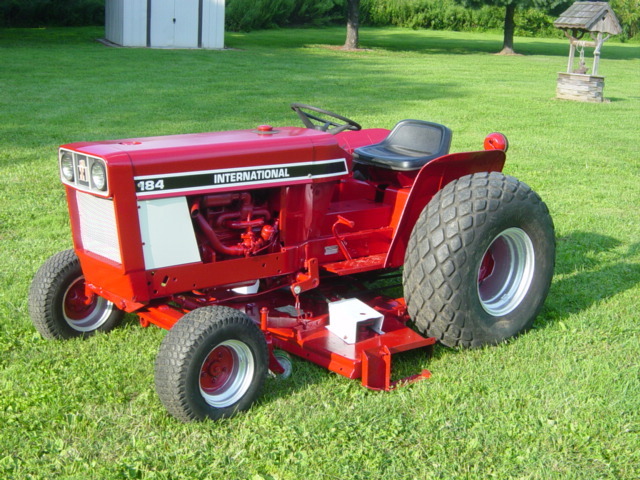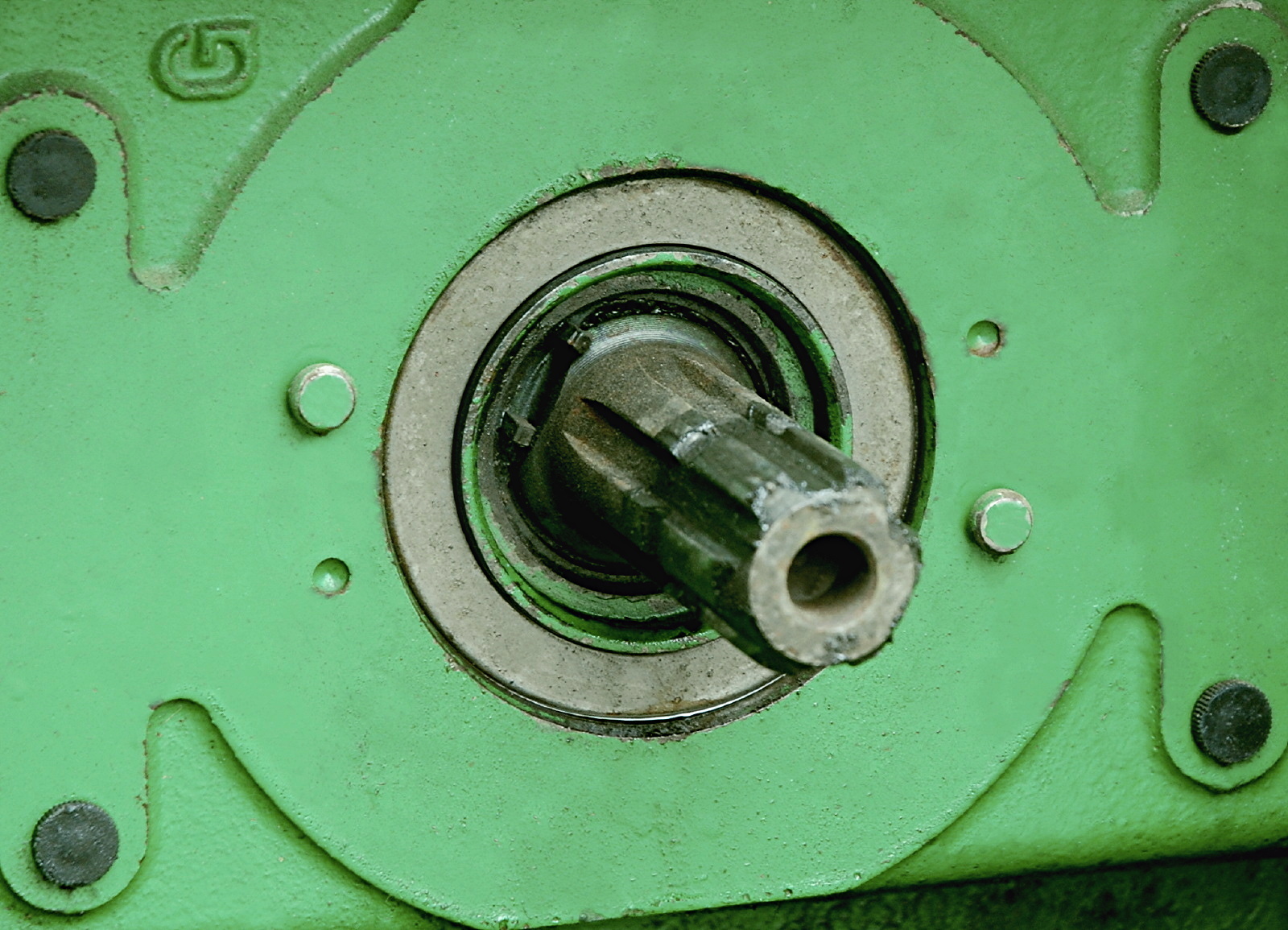|
Farmall France
International Harvester's Farmall brand of tractors were built in France between 1951 and 1964. Initially produced from US-made components, tractors were made at the International Harvester (IH) plant in Saint-Dizier with French parts from 1952. A range of models were produced, many based on the Farmall C, with special narrow-track models for use in vineyards. The offering gradually broadened, with adaptations of IH Germany models. The Farmall brand was phased out in 1964, with subsequent machines bearing the International Harvester brand. History McCormick agricultural machinery was marketed in France beginning in 1855. Following the consolidation the created the International Harvester (IH) company in 1902, a French branch of IH was established in 1906 as the ''Compagnie International des Machines Agricoles'' (CIMA), selling Deering and Osborne-branded equipment. A merger with distributor Wallut broadened the product line to include McCormick in 1934, with products sold under the ... [...More Info...] [...Related Items...] OR: [Wikipedia] [Google] [Baidu] |
International Harvester
The International Harvester Company (often abbreviated by IHC, IH, or simply International ( colloq.)) was an American manufacturer of agricultural and construction equipment, automobiles, commercial trucks, lawn and garden products, household equipment, and more. It was formed from the 1902 merger of McCormick Harvesting Machine Company and Deering Harvester Company and three smaller manufactures: Milwaukee; Plano; and Warder, Bushnell, and Glessner (manufacturers of Champion brand). In the 1980s all divisions were sold off except for International Trucks, which changed its parent company name to Navistar International (NYSE: NAV). Its brands included McCormick, Deering, and later McCormick-Deering, as well as International. Along with the Farmall and Cub Cadet tractors, International was also known for the Scout and Travelall vehicle nameplates. Given its monumental importance to the building of rural communities the brand continues to have a massive cult following. The ... [...More Info...] [...Related Items...] OR: [Wikipedia] [Google] [Baidu] |
Saint-Dizier
Saint-Dizier () is a subprefecture Of the Haute-Marne department in north-eastern France. It has a population of 23,382 (2018 figure) and is a subprefecture of the department. Although Saint-Dizier is marginally the most populous commune in Haute-Marne, the ''préfecture'' (capital) resides in the somewhat smaller commune of Chaumont. Geography Located approximately east of Paris, halfway to Strasbourg, it is five miles from Western Europe's largest man-made lake, Lake Der-Chantecoq. Climate History Named after an unknown saint (possibly Desiderius of Fontenelle), the town originated as a fortified settlement around a thirteenth-century château, eventually becoming a royal fortress to guard the French kingdom's eastern approaches. The town was besieged and captured by Charles V, Holy Roman Emperor, in the summer of 1544. A fire in 1775 destroyed two-thirds of the town center. The château was owned by the Orléans family until the French Revolution, was a base for German ... [...More Info...] [...Related Items...] OR: [Wikipedia] [Google] [Baidu] |
Farmall C
The Farmall C is a small two-plow row crop tractor produced by International Harvester under the Farmall brand from 1948 to 1951. The C was developed from the Farmall B as a slightly larger, more versatile implement, raising and moving the B's offset operator seat to the centerline and increasing the wheel size to allow a straight, widely-adjustable rear axle. The C kept the International Harvester C123 engine that had been used in the Super B model. The tractor was heavier and more robust, and featured hydraulic capability from the beginning. The C was incrementally updated with new model numbers as the Super C, 200, 230 and 240, but remained essentially the same machine. The closely-related successors to the C were produced until 1962. Description and production Styled by Raymond Loewy, it was one of International Harvester's " letter series", with 103,800 produced over the 4-year run. The C was rated for two plows.Pripps, pp. 84-85 The C was designated the Farmall E while ... [...More Info...] [...Related Items...] OR: [Wikipedia] [Google] [Baidu] |
Farmall
Farmall was a model name and later a brand name for tractors manufactured by International Harvester (IH), an American truck, tractor, and construction equipment company. The Farmall name was usually presented as McCormick-Deering Farmall and later McCormick Farmall in the evolving brand architecture of IH. Farmall was a prominent brand in the 20th-century trend toward the mechanization of agriculture in the US. Its general-purpose machines' origins were in row-crop tractors, a category that they helped establish and in which they long held a large market share. During the decades of Farmall production (1920s to 1980s), most Farmalls were built for row-crop work, but many orchard, fairway, and other variants were also built. Most Farmalls were all-purpose tractors that were affordable for small to medium-sized family farms and could do enough of the tasks needed on the farm that the need for hired hands was reduced and for working horses or mules eliminated. The original Fa ... [...More Info...] [...Related Items...] OR: [Wikipedia] [Google] [Baidu] |
Marshall Plan
The Marshall Plan (officially the European Recovery Program, ERP) was an American initiative enacted in 1948 to provide foreign aid to Western Europe. The United States transferred over $13 billion (equivalent of about $ in ) in economic recovery programs to Western European economies after the end of World War II. Replacing an earlier proposal for a Morgenthau Plan, it operated for four years beginning on April 3, 1948. The goals of the United States were to rebuild war-torn regions, remove trade barriers, modernize Manufacturing, industry, improve European prosperity and prevent the spread of communism. The Marshall Plan proposed the reduction of interstate barriers and the economic integration of the European Continent while also encouraging an increase in productivity as well as the adoption of modern business procedures. The Marshall Plan aid was divided among the participant states roughly on a per capita basis. A larger amount was given to the major industrial powers, ... [...More Info...] [...Related Items...] OR: [Wikipedia] [Google] [Baidu] |
Farmall Cub
The Farmall Cub or International Cub (or simply "Cub" as it is widely known) was the smallest tractor manufactured by International Harvester (IH) under either the McCormick-Deering, Farmall, or International names from 1947 through 1979 in Louisville, Kentucky. Description The Cub was initially designated the Farmall X, and was to use a two-cylinder engine. Development started in July, 1943, changing to a four-cylinder engine. A prototype was built by December 1944. In September 1945, it became the Farmall Cub.Leffingwell, Pripps, pp. 143-144 The two major variations of the Cub were the "Standard Cub" and the "Lo-Boy Cub" (or "Cub Lo-Boy"). They are recognized by their distinctive IH Red or Federal Yellow color schemes. In the late 1950s, sales of the Farmall Cub shifted from agricultural purpose to industrial purpose. IH capitalized on the shift, and the standard color for the Cub Lo-Boy and Cub changed from the familiar IH Red to Federal Yellow in 1960, with IH Red as an option ... [...More Info...] [...Related Items...] OR: [Wikipedia] [Google] [Baidu] |
Farmall Germany
International Harvester's Farmall brand of tractors was built in Germany between 1937 and 1959. For most of this time, the Farmall brand was not prominently used, even though the equipment was based on and styled similarly to the Farmall line. The D-217 Farmall was the product that most prominently displayed the brand. As IH Germany's product line increasingly diverged from that of the parent company, other brands were adopted, and most products were marketed as International. History International had been selling tractors in Germany under the Deering and McCormick brands since the 1880s, consolidating under the International Harvester brand in 1902. International Harvester Company GmbH was established in 1908, at Neuss am Rhein to produce agricultural equipment in Germany. Production was disrupted during World War I, and was stopped in 1924 for three months when the Ruhr Valley was occupied by French forces. Production was shifted to tractors in 1936 in response to Nazi tariffs ... [...More Info...] [...Related Items...] OR: [Wikipedia] [Google] [Baidu] |
Farmall 350
The Farmall H is a medium-sized two-plow row crop tractor produced by International Harvester under the Farmall brand from 1939 to 1954. It was the most widely produced of International Harvester's " letter series", with approximately 390,000 produced over the 14-year run. It succeeded the Farmall F-20. The H was incrementally updated with new model numbers as the Super H, 300, and 350, but remained essentially the same machine. The original H used an International Harvester C152 4-cylinder in-line engine. Production of all versions lasted until 1963. Description and production Styled by Raymond Loewy, it was one of International Harvester's " letter series", replacing the Farmall F-20. The H was rated for two plows. The H is equipped with a 4-cylinder in-line overhead valve with a displacement and a 6-volt, positive ground electrical system with generator, (when so ordered or retrofitted). The sliding-gear transmission includes six total gears: five forward and one reverse ... [...More Info...] [...Related Items...] OR: [Wikipedia] [Google] [Baidu] |
Torque Amplifier
A torque amplifier is a mechanical device that amplifies the torque of a rotating shaft without affecting its rotational speed. It is mechanically related to the capstan seen on ships. Its most widely known use is in power steering on automobiles. Another use is on the differential analyser, where it was used to increase the output torque of the otherwise limited ball-and-disk integrator. The term is also applied to some gearboxes used on tractors, although this is unrelated. It differs from a torque converter, in which the rotational speed of the output shaft decreases as the torque increases. History The first electric-powered torque amplifier was invented in 1925 by Henry W. Nieman of the Bethlehem Steel Company of Bethlehem, Pennsylvania. It was intended to allow manual control of heavy equipment; e.g., industrial cranes, artillery, etc. Vannevar Bush used Nieman's torque amplifier as part of his differential analyzer project at M.I.T in the early 1930s. Lord Kelvin had alread ... [...More Info...] [...Related Items...] OR: [Wikipedia] [Google] [Baidu] |
Power Take-off
A power take-off or power takeoff (PTO) is one of several methods for taking power from a power source, such as a running engine, and transmitting it to an application such as an attached implement or separate machine. Most commonly, it is a splined drive shaft installed on a tractor or truck allowing implements with mating fittings to be powered directly by the engine. Semi-permanently mounted power take-offs can also be found on industrial and marine engines. These applications typically use a drive shaft and bolted joint to transmit power to a secondary implement or accessory. In the case of a marine application, such shafts may be used to power fire pumps. In aircraft applications, such an accessory drive may be used in conjunction with a constant speed drive. Jet aircraft have four types of PTO units: internal gearbox, external gearbox, radial drive shaft, and bleed air, which are used to power engine accessories. In some cases, aircraft power take-off systems also provid ... [...More Info...] [...Related Items...] OR: [Wikipedia] [Google] [Baidu] |




